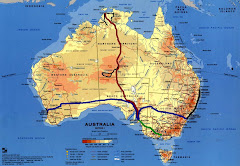Following European settlement of the Sydney area, the area was named the Carmarthen and Lansdowne Hills by Arthur Phillip in 1788. The Carmarthen Hills were in the north of the region and the Lansdowne Hills were in the south. The name Blue Mountains, however, was preferred and is derived from the blue tinge the range takes on when viewed from a distance. The tinge is caused by mie scattering which occurs when incoming ultraviolet radiation is scattered by particles within the atmosphere creating a blue-greyish colour to any distant objects, including mountains and clouds. It is widely, but incorrectly, believed that this is created by light reflecting off eucalypt leaves.
The Blue Mountains are a distinct physiographic section of the larger Hunter-Hawkesbury Sunkland province, which in turn is part of the larger East Australian Cordillera physiographic division.
The predominant natural vegetation of the higher ridges is eucalypt forest. Heath-like vegetation is present on plateau edges above cliffs. The sheltered gorges often have a temperate rainforest. There are also many hanging swamps with button grass reeds and thick, deep black soil. Wollemia nobilis, the "Wollemi pine", a relic of earlier vegetation of Gondwana, is found in remote and isolated valleys of the Wollemi National Park.


The Scenic Skyway: a glass-bottom aerial cable car that traverses an arm of the Jamison Valley.

















No comments:
Post a Comment